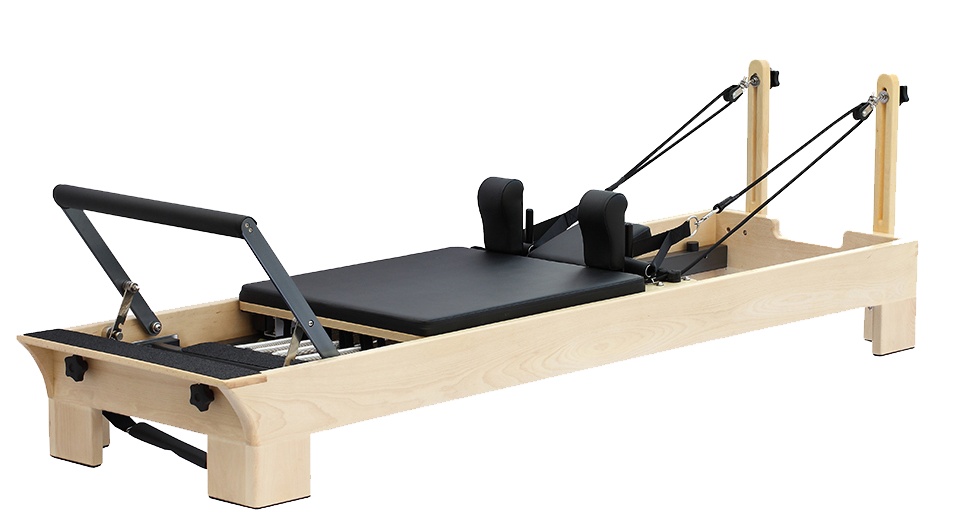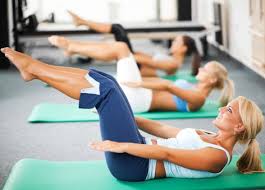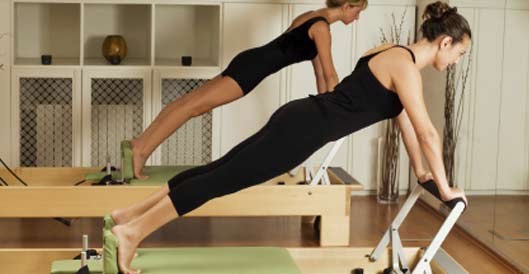We know that Pilates is one of those ‘all rounders’ when it comes to exercise. It’s great for building strength and stability, for improving flexibility, balance and mobility and also offers the added bonus of challenging the brain<->body connection.
One of the greatest strengths (and perhaps weaknesses) of Pilates is that it can be found in so many different forms. You can do mat Pilates, Pilates with props (magic rings, theraband, bosu etc), Equipment Pilates, Reformer Pilates, ‘Power’ Pilates, ante and postnatal Pilates, Clinical Pilates…and the list goes on… This means that you’ve got other options if you don’t like your first Pilates experience and that you can mix and match different styles to get even greater benefit.
Up until now, mat Pilates classes have kind of been our thing at GLOW, but with our new reformers arriving soon, I have had so many questions about reformer Pilates – specifically
- what are reformers?
- what’s the difference between mat and reformer Pilates?
- which one is right for me?
So naturally, I see this as an opportunity to educate and to help clear up any confusion!
What are Pilates Reformers?
Reformers are essentially a single bed frame with a sliding carriage and adjustable springs, which allow exercises to be performed in a variety of positions (including supine lying, sidelying, kneeling, sitting and standing). They were designed and developed by Joseph Pilates to rehabilitate immobilised soldiers from WWI. They can look quite daunting (a bit like a torture device!) but are one of the most versatile pieces of exercise equipment around.

What is the difference between Mat and Reformer Pilates?
Mat Pilates

Mat Pilates is the most traditional form of Pilates. It involves the use of your own body weight against the resistance of gravity and can provide a fantastic whole-body workout (arms. legs, abdominals and back). Mat Pilates can be a great option for beginners (when taught properly) because it emphasises the foundation of coordinating breath with movement and correct activation of your muscles without the distraction of equipment. By the same token, advanced mat classes can be one of the hardest strength workouts you’ll ever do. I am often amazed at some of the weird and wonderful mat Pilates exercises we can come up with just by using our own body weight +/- props like fitballs, Pilates balls, magic rings and theraband. We really are only limited by our imagination!
Reformer Pilates

Reformer Pilates offers something just a bit different to mat Pilates. Whilst the core concepts are the same, the springs, moving carriage, stirrups and pulleys add a whole new dynamic to the workout and offer even more versatility that mat classes. You can perform very basic to highly advanced exercises in any position on the reformer, just by modifying the exercise or adjusting the springs / pulleys.
Reformers are also more adaptable to people of different capabilities because they act as a bit of a support system for the body This means that even those with limited mobility or those recovering from injury can safely and effectively complete exercises. As physios, we love using reformers for rehab purposes (eg post knee surgery, back injury, shoulder injury) because we can often get improvements quicker by encouraging controlled movements early, before the patient might be ready for normal body-weight exercise.
Also, reformers are fun. There is just something a little more motivating about jumping on a reformer to complete a Pilates sessions, rather than doing all body-weight exercise. It might be the variety, adaptability or novelty it offers, but it really does bring something else to the table.
So which one should I do?
I think the answer to this really comes down to individual preference. I personally love both mat and reformer Pilates. I like the way I can focus on the fundamentals when doing a good mat workout, but I also love the variety and challenge I get from a reformer session. I really believe the best option for you is the one that fosters consistent exercise. This might come down to available class times, who you exercise with, how you feel after a session or how much fun you have during the session. So try both, see which you prefer and be open to mixing and matching to get the most out of your Pilates!
Recommended reading from Glow
3 reasons you didn’t like Pilates (and why you should give it another go!)
Can I improve my posture?
Should you be able to touch your toes?
